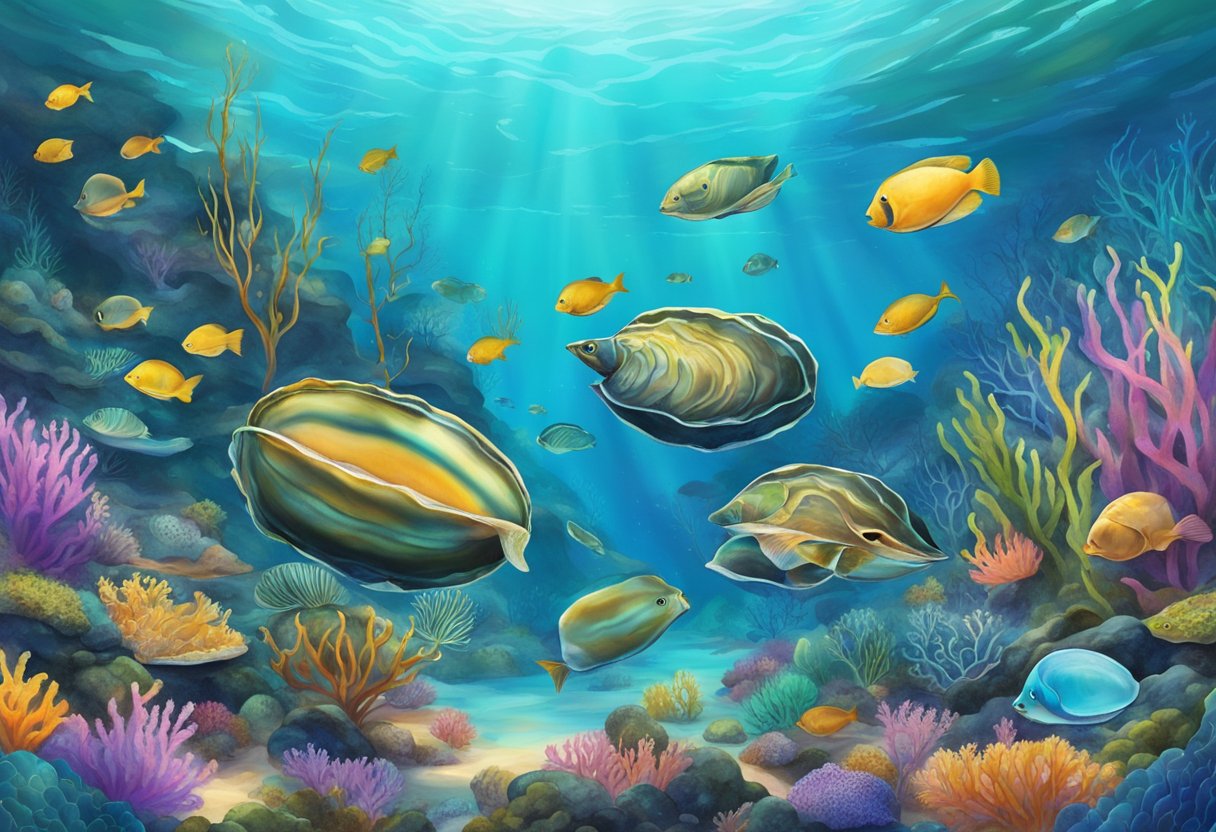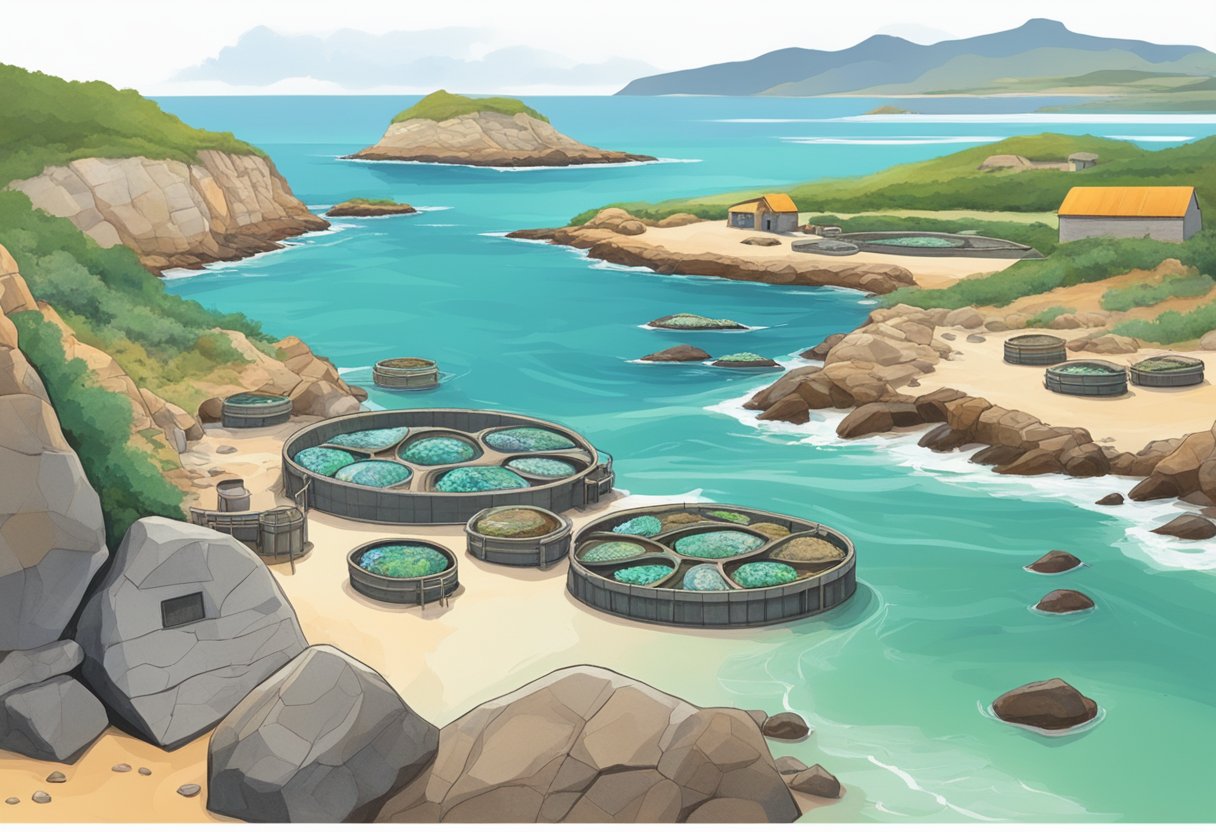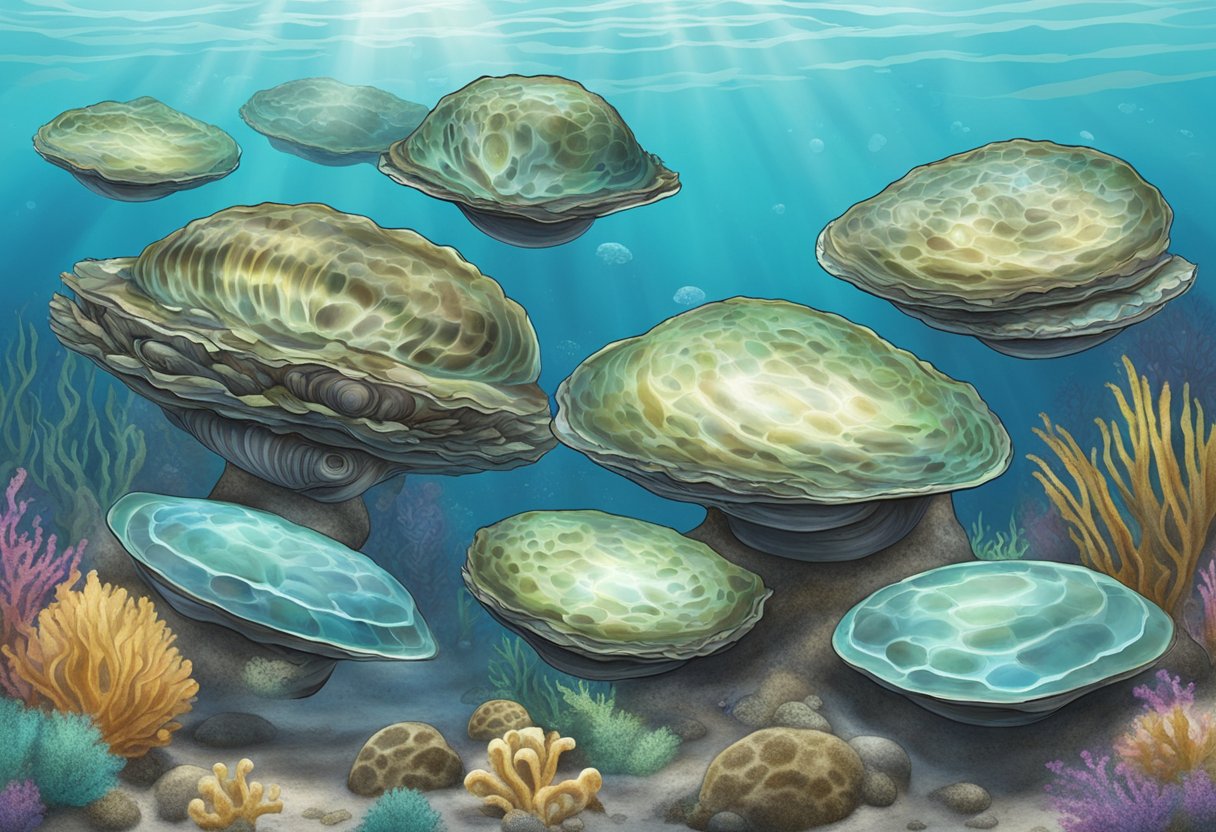South African abalone, also known as perlemoen, is a species of sea snail that is highly valued for its meat and shell. It is a marine gastropod mollusk that is found in rocky areas and depends on sea urchins for protection. The abalone is endemic to South Africa, and it is one of the country's most economically important marine resources.
The abalone is a large sea snail that can grow up to 20 centimetres in length and can live up to 30 years. It is a slow-growing species that is vulnerable to overfishing, and its population has declined drastically in recent years due to illegal harvesting and poaching. As a result, the South African government has implemented strict regulations to protect the species and its habitat.
South African abalone is a delicacy that is highly sought after in many parts of the world. It is often served in high-end restaurants and is considered a luxury food item. However, the abalone industry is facing significant challenges due to the decline in the population of the species. This article will explore the biology and ecology of South African abalone, as well as the conservation efforts and industry surrounding this valuable marine resource.
Key Takeaways
- South African abalone is an economically important marine resource that is highly valued for its meat and shell.
- The abalone is a slow-growing species that is vulnerable to overfishing and has declined drastically in recent years due to illegal harvesting and poaching.
- The abalone industry is facing significant challenges due to the decline in the population of the species, and conservation efforts are being implemented to protect the species and its habitat.
Biology and Ecology of South African Abalone

Scientific Classification
South African abalone, also known as Haliotis midae, is a species of marine snail belonging to the family Haliotidae. It is one of the most valuable and sought-after shellfish in the world due to its unique taste and texture.
Habitat and Diet
South African abalone is found in the rocky intertidal zone along the coast of South Africa, from Namibia to the Eastern Cape. They prefer areas with plenty of kelp and green algae, which they feed on. They also eat sea urchins and other small invertebrates.
Reproduction and Growth
South African abalone are hermaphrodites, meaning they have both male and female reproductive organs. They reach sexual maturity at around 4-5 years of age. During the breeding season, which occurs from late spring to early summer, they release their eggs and sperm into the water. The fertilized eggs hatch into larvae, which settle on the rocky substrate and grow into adult abalone.
South African abalone can live up to 30 years, but they are slow-growing and take several years to reach a marketable size. They are highly valued in the seafood industry and are harvested for their meat and shells. However, overfishing and poaching have led to a decline in their populations, and they are now a protected species in South Africa.
In summary, South African abalone is a valuable and ecologically important species found in the rocky intertidal zone along the coast of South Africa. They feed on kelp, green algae, and small invertebrates, and are hermaphrodites that reproduce during the breeding season. They are slow-growing and highly valued in the seafood industry, but their populations have declined due to overfishing and poaching.
Conservation and Industry

Abalone is a highly prized seafood delicacy and is considered as "white gold" in South Africa. However, the demand for abalone has led to overfishing and illegal trade, putting the species at risk of extinction. In this section, we will discuss the threats and conservation status of South African abalone, abalone farming and sustainability, and the regulation and enforcement of abalone trade.
Threats and Conservation Status
South African abalone is an endangered species due to overfishing and illegal trade. The illegal trade of abalone is embedded in South Africa's deeply unequal society and is driven by high demand from East Asian countries, such as China, where abalone is a delicacy and a culturally important dish. The Department of Forestry, Fisheries and the Environment (DFFE) has listed South African abalone as a protected species under the National Environmental Management: Biodiversity Act, making it illegal to harvest or trade abalone without the necessary permits.
The Southern African Sustainable Seafood Initiative (SASSI) has also listed South African abalone as a red-listed species, meaning that it is not a sustainable seafood choice. The conservation status of South African abalone is critical, and urgent measures need to be taken to protect the species from extinction.
Abalone Farming and Sustainability
Abalone farming is a sustainable alternative to wild abalone harvesting. Abalone farming is a highly regulated industry that involves the cultivation of abalone in tanks or cages. Abalone farming not only helps to conserve wild populations but also provides a sustainable source of income for communities involved in the industry.
Regulation and Enforcement
The South African government has implemented various regulations to protect South African abalone from overfishing and illegal trade. The Convention on International Trade in Endangered Species of Wild Fauna and Flora (CITES) has also listed South African abalone as a protected species, making it illegal to trade abalone internationally without the necessary permits.
The regulation and enforcement of abalone trade in South Africa are the responsibility of the DFFE. The DFFE has implemented a National Abalone Plan to combat poaching and illegal trade. The plan involves various measures, including increased patrols, intelligence gathering, and compliance monitoring.
In conclusion, the conservation of South African abalone is crucial to ensure the survival of the species. Abalone farming provides a sustainable alternative to wild harvesting, while regulations and enforcement help to combat overfishing and illegal trade. As a consumer, you can contribute to the conservation of South African abalone by choosing sustainable seafood choices and supporting the regulations and enforcement of abalone trade.
Frequently Asked Questions

What's the going rate for abalone in South Africa?
The price of abalone in South Africa can vary depending on the size and quality of the abalone. Generally, abalone is considered a luxury food item and can be quite expensive. The current market price for abalone in South Africa is around R1,500 to R2,000 per kilogram.
Can you explain the significance of abalone?
Abalone is an important species both ecologically and economically. The species is considered a keystone species in the marine ecosystem, meaning that it plays a critical role in maintaining the balance of the ecosystem. Abalone is also highly valued in the food industry, particularly in Asian cuisine, and is considered a luxury food item.
What's the reason behind abalone's legal status?
Abalone is a protected species in South Africa due to overfishing and poaching. The species is listed as endangered, and harvesting or selling abalone without a permit is illegal. The government has implemented strict regulations to protect the species and prevent further decline in population.
How do people typically use abalone?
Abalone is a versatile ingredient and can be used in a variety of dishes. It is often served as a delicacy in high-end restaurants, but it can also be prepared at home in a variety of ways, such as grilled, fried, or steamed. Abalone is also used in traditional Chinese medicine for its supposed health benefits.
What's another name for abalone in South Africa?
Abalone is commonly known as "perlemoen" in South Africa. The name comes from the Dutch word for mother-of-pearl, which refers to the iridescent inner shell of the abalone.
Are individuals allowed to harvest abalone in South Africa?
No, individuals are not allowed to harvest abalone in South Africa without a permit. The species is protected, and harvesting or selling abalone without a permit is illegal and can result in fines or imprisonment. The government has implemented strict regulations to protect the species and prevent further decline in population.

